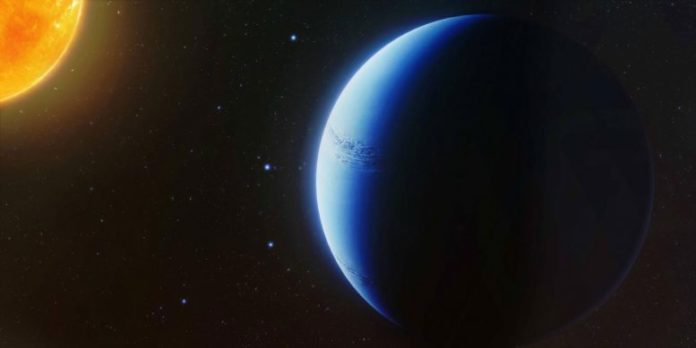An international team of astronomers, led by Dr. Nikolay Nikolov from the University of Exeter have detected an exoplanet atmosphere that is free of clouds. Their discovery could lead to the quest for greater understanding of the planets beyond our solar system.
Scientists studied the atmosphere of WASP-96b when the planet passed in front of its host star and found that the atmosphere of the ‘hot Saturn’ WASP-96b is cloud-free. They used Europe’s 8.2m Very Large Telescope in Chile for the discovery.
The spectrum of WASP-96b shows the complete fingerprint of sodium, which can only be observed for an atmosphere free of clouds.
Nikolay Nikolov, lead author and from the University of Exeter said; “We’ve been looking at more than twenty exoplanet transit spectra. WASP-96b is the only exoplanet that appears to be entirely cloud-free and shows such a clear sodium signature, making the planet a benchmark for characterization.”
“Until now, sodium was revealed either as a very narrow peak or found to be completely missing. This is because the characteristic ‘tent-shaped’ profile can only be produced deep in the atmosphere of the planet and for most planet clouds appear to get in the way”.
The sodium signature found in WASP-96b proposes an environment free of mists. The perception enabled the group to quantify how much sodium is in the air of the planet, discovering levels like those found in our own particular Solar System.
Professor. Jonathan J. Fortney, the study co-author, based at the Other Worlds Laboratory (OWL) at the University of California, Santa Cruz (UCSC) said, “It is difficult to predict which of these hot atmospheres will have thick clouds. By seeing the full range of possible atmospheres, from very cloudy to nearly cloud-free like WASP-96b, we’ll gain a better understanding of what these clouds are made of.”
Co-author Ernst de Mooij from Dublin City University said, “WASP-96b will also provide us with a unique opportunity to determine the abundances of other molecules, such as water, carbon monoxide and carbon dioxide with future observations.”
The results are published in the prestigious research journal Nature on May 7 2018.
